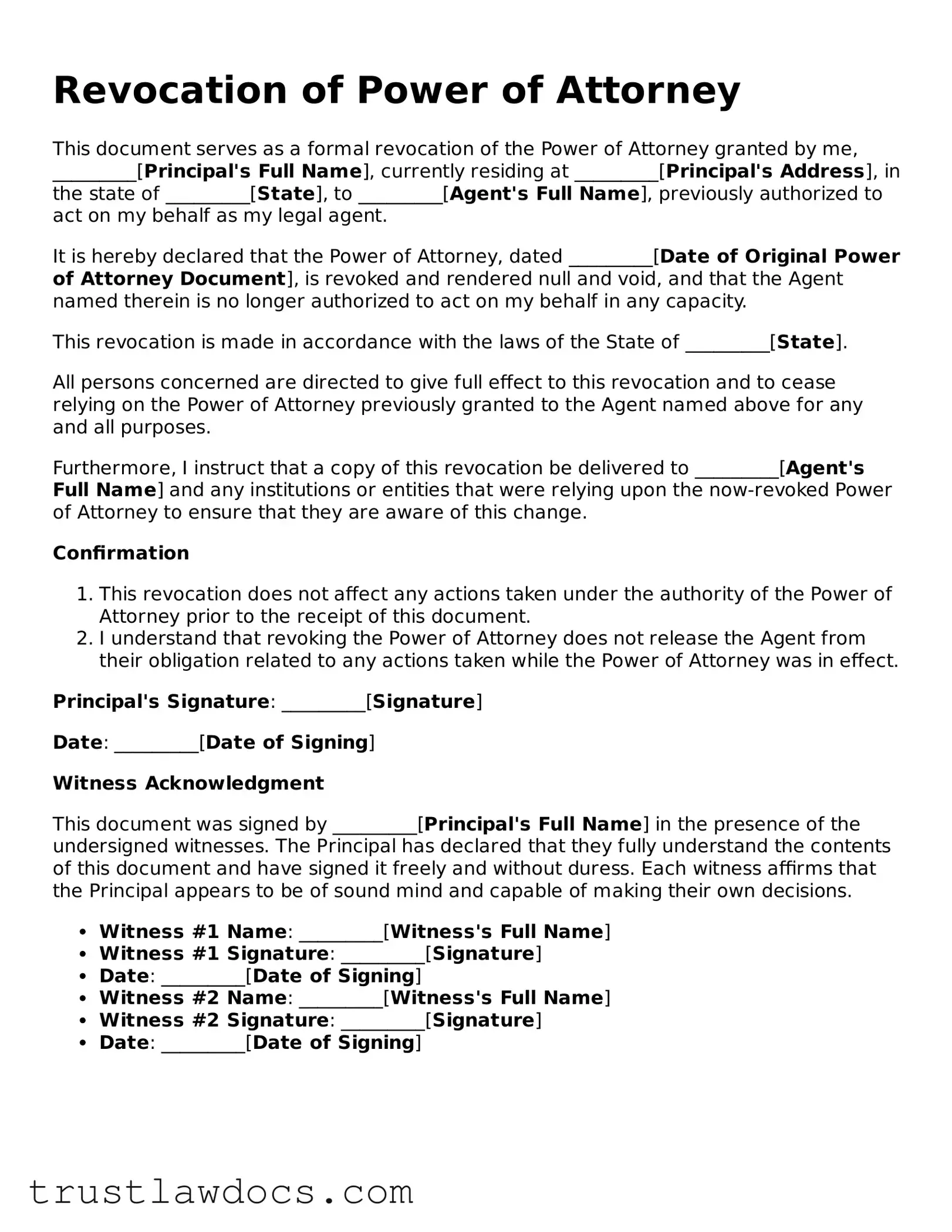What is a Revocation of Power of Attorney form?
A Revocation of Power of Attorney form is a legal document that allows a person, known as the principal, to cancel or revoke the authority granted to another person, known as the agent or attorney-in-fact, under a previously executed Power of Attorney. By signing this form, the principal officially ends the agent's power to act on their behalf.
When should I use a Revocation of Power of Attorney form?
This form should be used when you no longer need or want the agent to have the authority to make decisions or take action on your behalf. Reasons for revoking the power might include the completion of the task for which the Power of Attorney was granted, a change in the relationship with the agent, or if you wish to appoint a new agent.
Is the revocation effective immediately?
Yes, the revocation is effective immediately upon signing the form; however, it's important to notify any persons or institutions that were relying on the original Power of Attorney that the agent's authority has been revoked to avoid confusion and unauthorized acts performed by the agent after the revocation.
Do I need to notify my agent about the revocation?
Yes, notifying your agent is crucial. After signing the Revocation of Power of Attorney form, you should deliver a copy to the agent and any institutions or individuals that may be affected. This ensures everyone is aware that the agent can no longer legally act on your behalf.
What happens if I don't notify my agent or relevant parties?
If the agent or relevant parties are not notified, the agent may continue to act under the belief that they still have authority. If third parties rely on the Power of Attorney in good faith, without knowledge of the revocation, any actions taken by the agent might still be considered valid and legally binding.
Can the Revocation of Power of Attorney be reversed?
Once a Revocation of Power of Attorney form is executed, it cannot be reversed. If you change your mind and decide you want the same person to have power of attorney again, you would need to complete and sign a new Power of Attorney document.
Does revoking a Power of Attorney require a lawyer's assistance?
While it's possible to revoke a Power of Attorney on your own, consulting a lawyer can help ensure that the revocation is carried out correctly and that all necessary parties are properly notified. A lawyer can also provide advice on the implications of the revocation and assist with drafting a new Power of Attorney if needed.
Do I need to file the revocation with the court?
Filing requirements can vary depending on the jurisdiction and the type of Power of Attorney involved. While not always required, filing the revocation with the court or any other relevant registry where the original Power of Attorney was filed can provide a clear record of the revocation. It's advisable to check local laws or consult with a lawyer to determine the specific requirements in your area.
Are there any special considerations for revoking a Power of Attorney?
Yes, when revoking a Power of Attorney, it's important to consider the timing and manner in which you revoke the authority to ensure all parties are informed and to mitigate any potential issues. It's also crucial to review and understand any state-specific requirements or forms that may be required to effectively revoke the Power of Attorney. Consulting with a legal professional can help you navigate these considerations.
